 W
WThe Argos-class patrol boat is a model of patrol boat in service in the Portuguese Navy since 1991. This type of ship was designed by the Arsenal do Alfeite, Lisbon, but was built in private shipyards located in Vila Real de Santo António.
 W
WThe Barentshav class of offshore patrol vessels consists of three vessels powered by liquefied natural gas. Ordered for the Norwegian Coast Guard, their main tasks are EEZ patrol, fishery inspection, search and rescue as well as tug readiness along the shore of Norway which is seeing increasing traffic from tankers.
 W
WThe Centauro-class fiscalization boat is a class of patrol boats in service with the Portuguese Navy. It is an evolution of the previous Argos-class, which is why it was previously referred to as Argos class - 2nd Series. The main difference from the previous Argos is the naval, corrosion-resistant, aluminium hull.
 W
WThe Damen Stan 2600 is a line of patrol vessels built or designed by Netherlands shipbuilding firm the Damen Group.
 W
WThe Dutch shipbuilding firm The Damen Group, designs and manufactures a range of patrol vessels, of various sizes, including the Damen Stan 4207 Patrol Vessels. The Damen Stan patrol vessel designs' names include a four digit code, where the first two digits are the vessel's length, in metres, and the second two digits are its width.
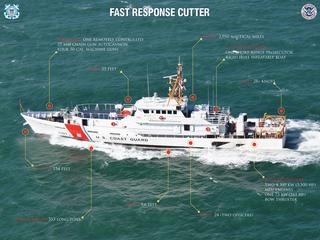 W
WThe Damen Group shipbuilders, based in the Netherlands, has managed the manufacture of Damen Stan patrol vessel 4708 for South Africa and the United States. The vessels, like the earlier Damen Stan patrol vessel 4207, are designed for high speed coastal patrols. They can be flexibly configured to serve in a constabulary, environmental protection, or warship role.
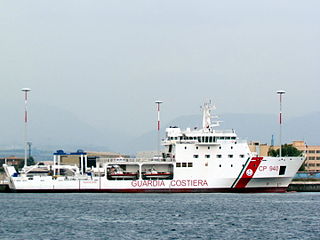 W
WThe Dattilo class of offshore patrol vessels (OPVs) consists of two vessels ordered for the Italian Coast Guard. The main mission of the OPVs is to safeguard national interests through patrolling activities and carry out anti-pollution and rescue services. The aft area is often fitted with a flight deck for the take-off and landing operations of one medium-sized helicopter. Typical features of such vessels are the extensive range as well as sea-keeping and manoeuvrability performances, which make them highly flexible from the operational point of view.
 W
WThe Durango class is an offshore patrol vessel class in service with the Mexican Navy. The Durango class, comprising four ships, was designed and constructed in Mexico in 1999–2000. The class entered service in 2000 and is used primarily for drug interdiction and patrol.
 W
WThe Fearless-class patrol vessels were built by Singapore Technologies (ST) Marine for the Republic of Singapore Navy in the 1990s. Together, the ships formed the 182 and 189 Squadron.
 W
WThe Haize Hegoa type patrol boats are a series of 8 swift boats used by the Directorate-general of customs and indirect taxes, the French customs service. Haize Hegoa means southern wind in basque language.
 W
WThe Independence-class littoral mission vessel (LMV) is a class of eight surface platforms that are slated to replace the Fearless-class patrol vessel of the Republic of Singapore Navy.
 W
WThe Iwami-class patrol vessel is a class of 1,000 ton-class PL type patrol vessels of the Japan Coast Guard (JCG).
 W
WThe Kunigami-class patrol vessel is a class of 1,000 ton-class PL type patrol vessels of the Japan Coast Guard (JCG).
 W
WThe Léopard-class training ships are a class of sea vessels built for the Force d'action Navale to train French officer-candidates in basic seamanship. There are 8 of these vessels built. They were built by La Perrière in Lorient, Ateliers et Chantiers de la Manche (ACM) in Saint-Malo, and Société Française de Construction Navale (SFCN). These vessels have a secondary role of anti-pollution work, and are still in active service as of 2016.
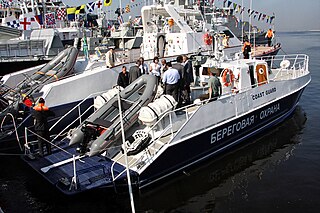 W
WThe Mangust-class patrol boat, also known as Project 12150, is a Russian Coast Guard vessel. The patrol craft is designed to operate in coastal areas, ports, and other littoral areas, to perform missions like protection of territorial maritime borders, law enforcement, other defense missions, search and rescue, protection of fisheries, and enforcing rules of navigation.
 W
WThe Ogonek-class river patrol craft, also known as Project 12130, is a Russian Coast Guard vessel. The patrol craft is designed to operate in rivers and perform various missions of the Russian Coast Guard like protecting Russian maritime borders, law enforcement, enforcement of navigation rules, search and rescue, and fisheries protection. These vessels work alongside other classes of Russian Coast Guard vessels, such as the Vosh class and the Piyavka class river patrol vessels.
 W
WThe Mirna class is a class of eleven patrol boats built for the Yugoslav Navy by the Tito's Kraljevica Shipyard. Intended as a replacement for the earlier Type 131 boats, the new class was completed during the early 1980s and commissioned in the JRM Maritime Border Brigade.
 W
WThe Japanese patrol boat Mizuho is a PLH type patrol vessels of the Japan Coast Guard. She was built by Mitsubishi Heavy Industries Shimonoseki Shipyard.
 W
WNaiguatá (GC-23) was a 79.9-metre (262 ft) littoral patrol boat of the Venezuelan Coast Guard. The vessel was constructed by Navantia in Cádiz, Spain beginning in 2008. On 30 March 2020, the vessel rammed the cruise ship RCGS Resolute in international waters and sank.
 W
WThe Okean class, Russian designation Project 22100 Okean (ocean), is a class of oceanic patrol vessels being constructed by Zelenodolsk Shipyard for the Russian Coast Guard. The vessels of this class are intended for protection of Russia's exclusive economic zone (EEZ), providing support to combat and rescue missions, fire fighting or fisheries protection. Apart from this, the ships will be involved in ensuring actions of the FSB of Russia by fighting terrorism and piracy, goods smuggling, drug trafficking or illegal migration.
 W
WThe Osprey HSY-56A-class gunboat is a class of naval vessel currently in service in the Hellenic Navy. These ships are similar to HSY-55-class gunboat and were also built by Hellenic Shipyards (HSY). They are the most modern patrol vessels of Hellenic Navy. The first ship of the class named Machitis was commissioned on 29 October 2003. In 2018 all of the four ships of the class are in active service.
 W
WThe Piyavka-class river patrol boat, also known as Project 1249, is a Russian Coast Guard vessel. The patrol craft is designed to operate in rivers to secure and protect Russian maritime borders, enforce navigational laws and other law enforcement duties, and search and rescue. The patrol craft work alongside other Russian Coast Guard and Navy vessels, such as the Vosh class and the Ogonek class river patrol craft. Its hull is not capable of breaking through heavy ice during the winter season.
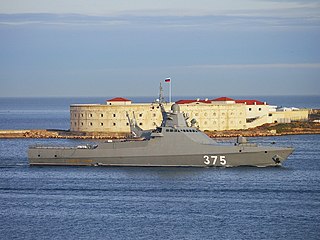 W
WProject 22160 is a series of large patrol ships being constructed for the Russian Navy. The vessels are primarily intended for duties such as patrol, monitoring and protection in open and closed seas. The first ship was laid down in February 2014 and by December 2016 five ships were under construction. The first ship joined the Russian Navy in December 2018.
 W
WThe Purga class, Russian designation Project 22120 Purga (blizzard), is a series of ice-strengthened patrol ships designed by Petrobalt Design Bureau and being built by Almaz for the Russian Coast Guard. Project 22120 is a new generation border patrol vessel with an icebreaking capability, allowing it independent navigation in areas with ice thickness up to 0.6 m during winter-spring and up to 0.8 m during summer-autumn season. The class is intended for operations in waters near Sakhalin, Russia's largest island.
 W
WThe Rubin class, Russian designation Project 22460 Okhotnik, is a class of Russian border patrol vessels being constructed for the Russian Coast Guard. It is designed to combat surface and airborne targets and threats. It can also conduct patrol and convoy escort duties. It is equipped with a Horizon Air S-100, a license-built version of the Austrian Camcopter S-100 helicopter unmanned aerial vehicle, which is intended for search, detection and identification of small high-speed sea targets at a distance of 150 km (93 mi) from the carrier vessel.
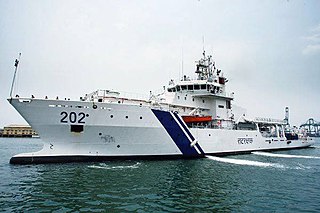 W
WThe Samudra-class Pollution Control Vessel is a class of three vessels built by the ABG Shipyard in Gujarat for Indian Coast Guard.
 W
WThe MV Seaman Guard Ohio is a floating armory ship owned by AdvanFort and used for storing weapons and security guards on private anti-piracy contracts. In October 2013, the ship was impounded and the crew and armed guards aboard were detained after it allegedly entered Indian waters with illegal arms without adequate permission.
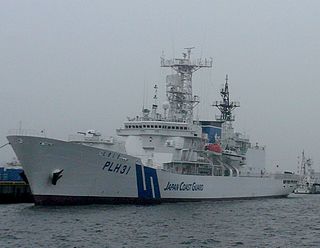 W
WThe Japanese patrol boat Shikishima is a Shikishima-class patrol vessel of the Japan Coast Guard (JCG). She was built by Ishikawajima-Harima Heavy Industries, Tokyo.
 W
WThe Shikishima-class patrol vessel is a class of PLH type patrol vessels of the Japan Coast Guard.
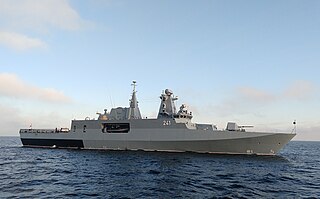 W
WORP Ślązak is an offshore patrol vessel of the Polish Navy, formerly known as Gawron-class corvette. The ship is named Ślązak. It is a licence variant of the MEKO A-100 project developed by Blohm + Voss.
 W
WThe Sobol-class patrol boat, also known as Project 12200, is a Russian Coast Guard vessel. The patrol craft is designed to operate in coastal areas, ports, and other littoral areas, to perform missions like protection of territorial maritime borders, law enforcement, other defense missions, search and rescue, and protection of fisheries.
 W
WNoCGV Svalbard (W303) is a Norwegian Coast Guard icebreaker and offshore patrol vessel constructed by Langsten AS at Tangen Verft shipyard in Kragerø and launched on 17 February 2001. She was named 15 December in Tomrefjord with Minister of Defence Kristin Krohn Devold as godmother, and delivered to the Coast Guard on 18 January 2002. She entered service in mid-2002 and is homeported in Sortland. Her primary operating area is in the Arctic waters north of Norway, the Barents Sea and around the Svalbard islands.
 W
WThe Svetlyak class, Russian designation Project 10410 Svetlyak, is a class of patrol boats designed and built in the Soviet Union and later in Russia, and currently being used primarily by the Russian Navy and Russian Coast Guard.
 W
WThe Vosh-class river patrol craft , also known as Project 1248, which has Project 12481 variant. Both are Russian Coast Guard vessels. The patrol craft is designed to operate in rivers and protect/secure Russian maritime borders, enforce navigational rules and other laws, search and rescue. They work alongside other patrol craft of the Russian Coast Guard and Navy, such as the Piyavka class and the Ogonek class river patrol craft.
 W
WThe Yaz-class river patrol boat, also known as Project 1208, is a Russian Coast Guard vessel. The patrol craft is designed to operate in rivers to secure and protect Russian maritime borders, enforce navigational laws and other law enforcement duties, and search and rescue. The patrol craft work alongside other Russian Coast Guard and Navy vessels, such as the Vosh class and the Ogonek class river patrol craft. The single active vessel is assigned to the Amur-Ussuri River network.